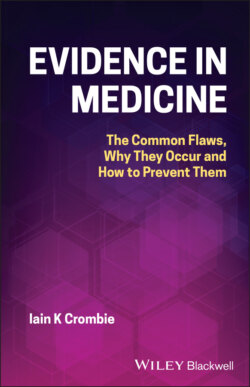Читать книгу Evidence in Medicine - Iain K. Crombie - Страница 28
Extent of Loss to Follow‐up
ОглавлениеLoss to follow‐up occurs in almost all clinical trials, although reporting of this is often incomplete. One problem is that some published papers give no information about loss to follow‐up. A study of trials in five leading journals found that 13% failed to report whether or not loss to follow‐up had occurred [42]. Other studies have found that the lack of an explicit statement about missing data occurred in 6.5% [43] and 26% [44] of published papers.
Trials that report the extent of loss to follow‐up vary greatly in the proportion of participants affected. Among 77 trials published in leading medical journals in 2013, 95% reported some missing outcome data: although the median loss was 9%, the highest reported was 70% [45]. Similarly in trials funded by a Health Technology Assessment programme, the median loss was 11%, but this ranged from 0% to 77% in individual studies [46].
In many trials loss follow‐up exceeds the notional threshold of 20% for serious loss. The extent of this may vary across specialties. Among trials in palliative care it was 23% [47], slightly higher in osteoarthritis (26%) [44] and 39% in rheumatoid arthritis [48]. Among obesity trials 74% reported losses >20% [49].
Care is needed in the interpretation of the loss to follow‐up rates. In a study of 21 trials, the data reported to the US Food and Drugs Administration showed markedly higher median loss to follow‐up (13%), than that in the corresponding published papers (0.3%) [50]. The authors of this study concluded that the ‘published rates consistently seem to be inadequate representations of the completeness and quality of follow‐up’.
